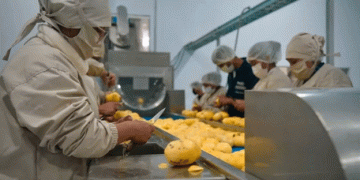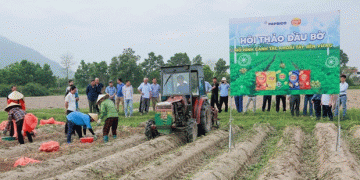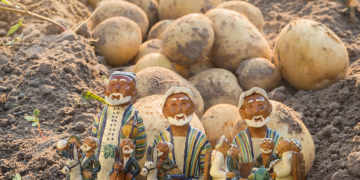Variable legs of consumer potatoes work, according to experience of growers participating in the National Experimental Garden Precision Agriculture (NPPL). It does take time in an often busy period.
In the case of variable legs of consumer potatoes, the yield can be increased. For example, by stepping closer on heavy ground within a plot. Some growers within the NPPL have been working on this for years. Others take the first steps.
Potato grower Peter van der Poel from abbenbroek in South Holland will not be able to make it variable this year. The planting machine he bought three years ago didn’t seem right. He thinks the machine is too young to replace it.
In an earlier trial on a 5 hectare plot, Van der Poel used a planting machine from a colleague. ‘That looked really interesting especially for the table potatoes. What we discussed on paper beforehand turned out to be true in the field.’
Technique
NPPL contestant Mischa Raedts from Sevenum also failed to make his potatoes variable this season. ‘I haven’t been able to do any tests myself this season, because the technique simply let me down,’ he says.
A year ago, Raedt was able to use variable legs on two plots with the help of a contractor. This time it turned out differently. ‘The contractor’s seed computer could not read the task card of the plot. And then you get stuck. Given the limited time, you have to move on.’
The amount of time that goes into variable legs is sometimes underestimated, says Raedts. ‘It’s a lot to try and invent now. It’s going to take time. In terms of costs, this can’t quite work out, because you don’t get paid for your end product anymore.’
Spray paths
Jacob van den Borne from North Brabant has significantly more experience with variable legs than his colleagues. Not only does it adjust the leg distance, spray paths have also been established in the plot around which four backs of potatoes are planted that are planted about 11 percent closer.
The planting distance in the plot is adjusted according to light, water and weather conditions. Van den Borne can therefore, according to his own estimate, stretch the yield by as much as 90 to 95 percent. He also takes into account shadow zones. There he plants the potatoes more broadly. Later, the potato grower discovered that in addition to light, water and nutrients, temperature is also an important factor.
Every year Van den Borne goes a step further in the variable legs. But he says it continues to look for new revenue models. ‘We now work with variable legs often with rough estimates and measurements. We need to go into this. The focus is no longer on the technology, because it works. We’re looking for a good business model.’






